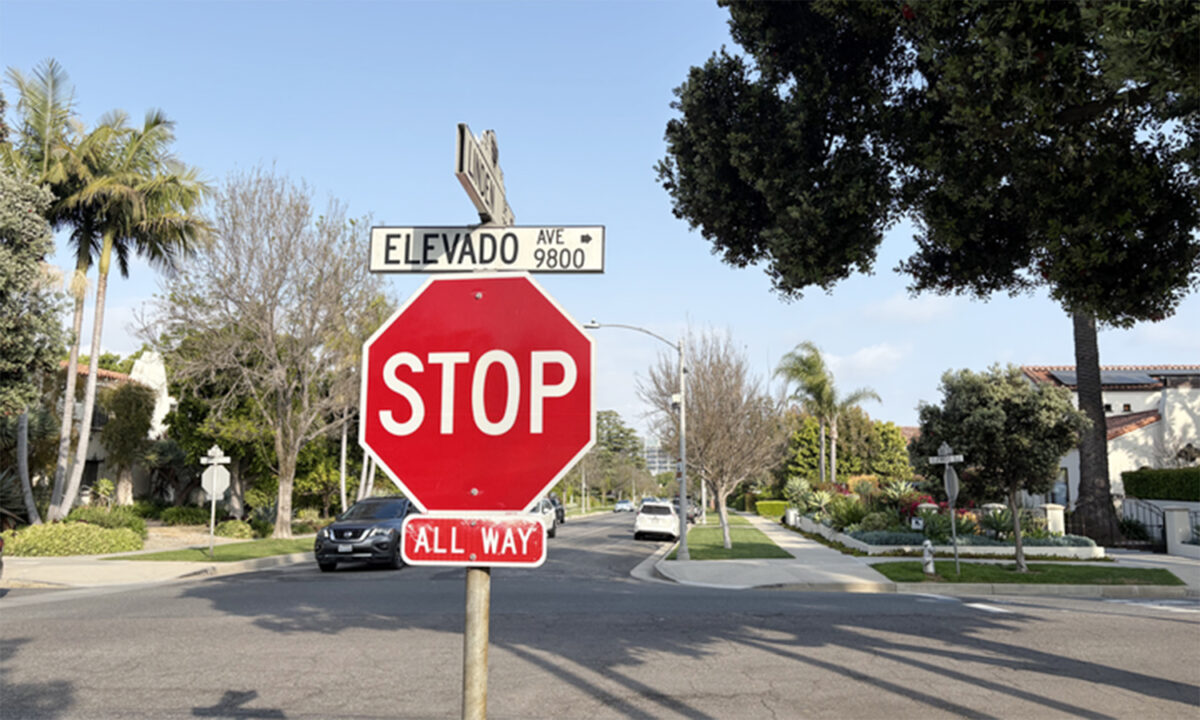The one thing that State and local governments can agree on in California is that the Golden State is in the midst of a dire housing crisis. But in its efforts to address the issue, Sacramento has come under fire by cities for what they describe as an unreasonable expectation of new housing over the next eight years. At the Oct. 13 Beverly Hills City Council Study Session, the Council moved to convene an ad hoc committee to explore an appeal of the number of units allocated to the City in its Regional Housing Needs Assessment (RHNA) number.
Every eight years, cities and jurisdictions around the State draft a new Housing Element, a part of the General Plan which considers the housing needs of the community and anticipates how that need will change. With the housing cycle slated to start again in 2021, localities across the State are preparing their Housing Elements for approval by the State.
The core component of the Housing Element is the RHNA, an evaluation of the number of units needed in the next eight years and the land use plans and regulations necessary to accommodate them.
The State Department of Housing and Community Development (HCD) first determines the housing needs in each region of California by examining population data. The agency also considers economic and demographic trends, overcrowding, and overpayment of rents and mortgages. The number that HCD calculates gets passed to a local regional planning agency–the Southern California Association of Governments (SCAG), in the case of Beverly Hills–that looks at more local data and distributes the total among its jurisdictions.
In 2019, as cities across California grappled with soaring rents and a homelessness crisis, HCD announced an ambitious goal of about 3.5 million new units over the new Housing Elements cycle. Southern California’s share of the load came out to 1.3 million units. For Beverly Hills: 3,096 units.
In comparison, in the last housing cycle, Beverly Hills’ allotment was only three.
While the City is required to plan for a certain level of growth and take efforts to facilitate it, the RHNA is “not a development mandate,” the Staff Report notes. Jurisdictions must ensure that bureaucratic hurdles like zoning and planning do not obstruct development, but they do not need to build housing or issue permits themselves. But, if the State determines that a jurisdiction has not done enough to foster development, it can withhold certification of its General Plan. This results in loss of certain State funds, more frequent updates to the City’s Housing Element, and loss of control over housing project decisions.
Cities face similar penalties for not meeting their RHNA obligations. Jurisdictions will have to implement a streamlined review process to approve housing development projects.
Assistant Director of Community Development Ryan Gohlich explained that to comply with RHNA, the City “must show that we have land use plans and regulations either in place or to be implemented that will allow housing developments adequate to meet our RHNA obligations. This can include changes to the zoning itself or to regulations to make it more permissive to build housing. And then, throughout the RHNA cycle, we have to show our progress to the State that we are actually meeting the numbers as required.”
The RHNA breaks down this number into four income categories, very low, low, moderate, and above moderate. For Beverly Hills, this breaks down as 1,005 very low income units, 678 low income units, 601 moderate income units, and 812 above moderate income, or market rate, units.
“When we receive the RHNA allocation, we then have to show in our Housing Element that we can meet the RHNA number that’s been assigned to us,” said Gohlich. “As part of that, we have to look at housing barriers and address those through policies, we have to show that land is zoned to accommodate units, and that we have policies and programs either in place or to be implemented that will encourage the appropriate number of units at each income level.”
The current RHNA numbers only represent a draft. Jurisdictions have the right to appeal the number allocated to them by their local regional planning agency. But, as Gohlich told the Council, “In the past, it has been our experience that very few jurisdictions have been successful in their appeals, because there are such limitations on what the grounds for appeal are and those tend to get tighter over time.”
“For example, an ‘unrealistically high’ RHNA allocation based on market trends and lack of vacant land is not considered to be legitimate grounds for appeal,” the Staff Report reads.
Further complicating the process, any reduction granted to a jurisdiction must be offset by an increase in units in other jurisdictions.
The State will consider three grounds for an appeal. Jurisdictions can appeal on the grounds of a misapplication of methodology. Beverly Hills could claim that SCAG misapplied the methodology used for allocating units.
“We reviewed the methodology and, whether we agree or disagree with the methodology, it does not appear as though SCAG has miscalculated our assignment,” Gohlich said.
Additionally, the City could argue that SCAG did not consider certain local factors, including a lack of capacity for sewer and water service, lack of available land suitable for urban development, and the rate of overcrowding.
Said Gohlich: “Again, we do not see any items specific to Beverly Hills that fit within that particular set of facts.”
Finally, the City could claim a “significant and unforeseen change in circumstance” that happened after April 30, 2019. As an example of a change in circumstance that might pass muster, Gohlich cited the town of Paradise, “where they had wildfires come through and they lost just about all of the city.” By this standard, Beverly Hills looks about the same as it did on April 30, 2019. “We have not identified any significant changes in circumstance in Beverly Hills at this time,” said Gohlich.
Jurisdictions have until Oct. 26 to file an appeal, meaning Tuesday’s City Council meeting was the last opportunity for the Council to consider this option.
Gohlich explained that staff were not recommending the City to appeal the RHNA number, pointing to the City’s RHNA allocation of only three units from the last housing cycle.
“With such a low number, I think looking at a much higher number this year, there is some balance there between the two cycles,” he said. “Other cities under the prior cycle had much higher allocations from SCAG.”
He also told the Council that appeals tended to fail due to the strict criteria. In the last RHNA cycle eight years ago, 12 cities appealed their allotment. None succeeded. A meritless appeal, he warned, might risk alienating the State agency in charge of overseeing the process–losing valuable goodwill in the process.
Gohlich told the Council that he has spoken with a number of colleagues at other cities. “I have not found one so far that thinks that they have a case for appeal that meets the criteria,” he said. “Some of them are filing appeals because they’ve been directed to do so, but they don’t believe that they will be successful in their appeals because the criteria are so strict from SCAG and from the State.”
Finally, he said that even in the case of a successful appeal, the number would not be reduced by a significant amount. “Even a 10 or 20 percent reduction would still leave us with a substantial number of units to plan for.”
Many City Council Members expressed frustration with the process. Councilmember Dr. Julian Gold accused the State of a “bait and switch.” Councilmember Lili Bosse argued that the RHNA numbers fail to account for the City’s limited power in realizing new developments. “Unfortunately, I believe that we have been really trying to encourage development for affordable housing, but on the other hand, we can’t necessarily make people build housing,” she said.
One of the most vocal councilmembers on the subject, John Mirisch, described the RHNA number as “punitive” and the entire process as “weaponized.”
Given the difficulty of making a successful appeal, the City Council moved to form an ad hoc committee to examine the route, with councilmembers Robert Wunderlich and Mirisch serving as liaisons.
“I do think we should appeal,” said Mirisch. “I agree it’s probably not going to make a difference, but at least we will have gone on record saying that we feel that the process is flawed.”







